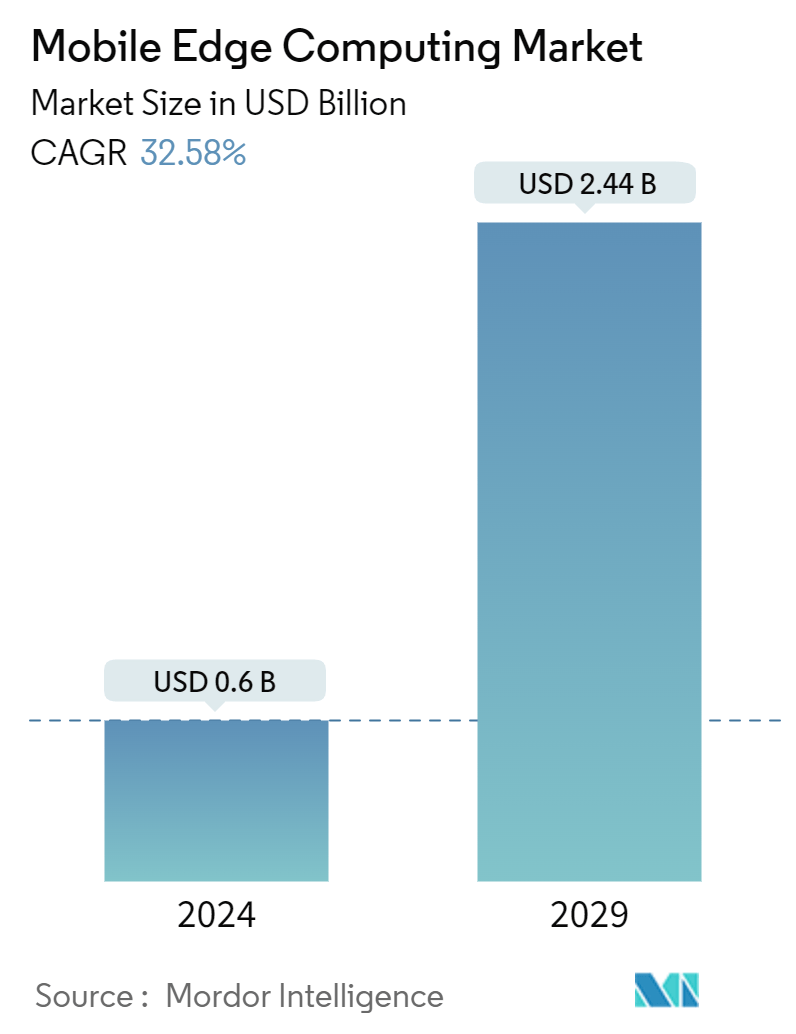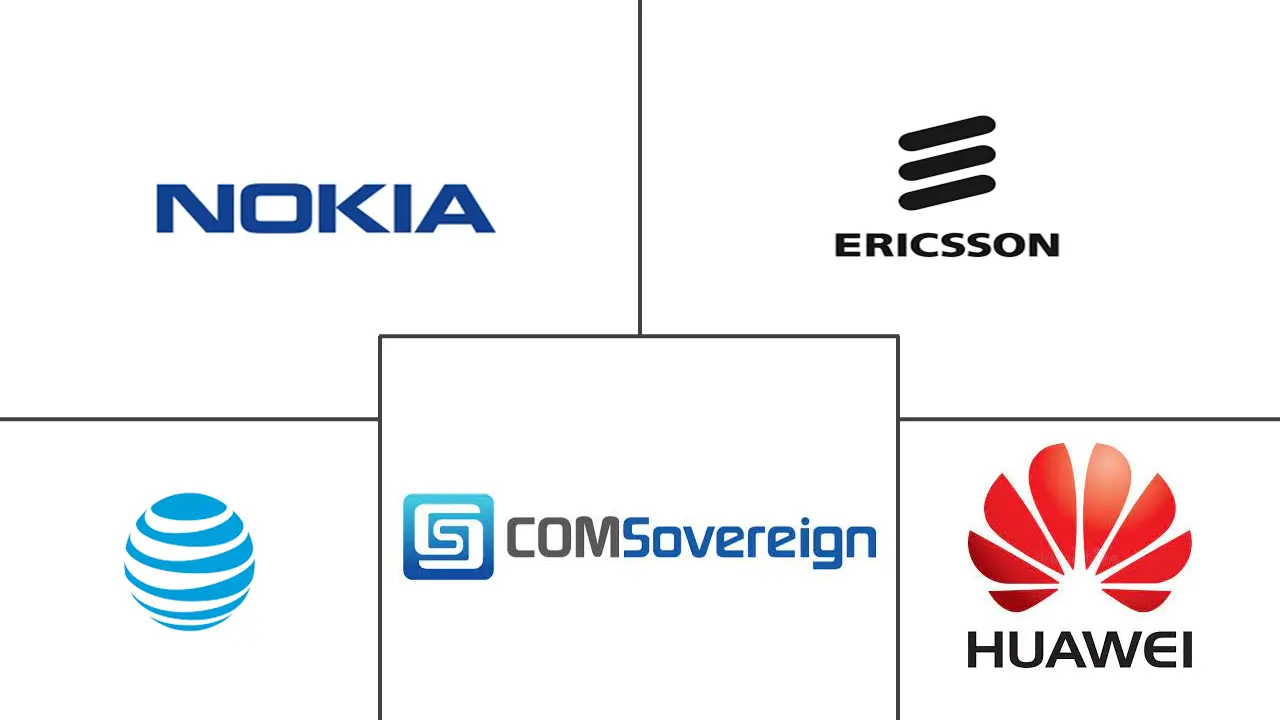Market Size of Mobile Edge Computing Industry

| Study Period | 2019 - 2029 |
| Market Size (2024) | USD 0.6 Billion |
| Market Size (2029) | USD 2.44 Billion |
| CAGR (2024 - 2029) | 32.58 % |
| Fastest Growing Market | Asia Pacific |
| Largest Market | North America |
Major Players
*Disclaimer: Major Players sorted in no particular order |
Need a report that reflects how COVID-19 has impacted this market and its growth?
Mobile Edge Computing (MEC) Market Analysis
The Mobile Edge Computing Market size is estimated at USD 0.6 billion in 2024, and is expected to reach USD 2.44 billion by 2029, growing at a CAGR of 32.58% during the forecast period (2024-2029).
Multi-access edge computing (MEC), popularly known as mobile edge computing, is a form of edge computing that brings cloud computing to the network's edge to increase its functionality. MEC is a result of the European Telecommunications Standards Institute (ETSI) program that was first intended to place edge nodes on mobile networks but has since expanded to include the fixed (or eventually integrated) network. MEC permits operations in base stations, central offices, and other aggregation sites on the network, as opposed to traditional cloud computing, which takes place on distant servers, far from the user and device.
- The demand for digital media services is increasing as the number of wireless subscriptions grows exponentially. Mobile wireless networks have advanced tremendously to meet this growing need. Enterprises across industries are beginning to drive new levels of performance and productivity by deploying different technological innovations, like sensors and other data-producing and collecting devices, along with analysis tools. Traditionally, data management and analysis are performed in the cloud or data centers. However, the scenario seems to be changing with the increasing penetration of network-related technologies and initiatives, such as smart manufacturing and smart cities.
- Furthermore, with the current 4G networks reaching their maximum limit, 5G will have to manage online traffic far more intelligently, in which mobile edge computing will play a major role. In addition to managing the data load, MEC is expected to significantly reduce the latency in 5G networks.
- In the telecom industry, edge computing, also known as mobile edge computing, MEC, or multi-access edge computing, offers execution resources (compute and storage) for applications with networking close to end users, often within or at the boundary of operator networks. Edge solutions offer key advantages: low latency, high bandwidth, device processing, data offloading, and reliable computing and storage.
- As with any network technology/ architecture, MEC is prone to various threats and hardware that lay in wait owing to its lack of security framework. A wide variety of threats and hazards could potentially occur in the MEC network. However, the most common attacks that hinder the market's growth can be narrowed down to compromised protocols, falsified information and logs, loss of policy enforcement, man-in-the-middle, and data loss.

